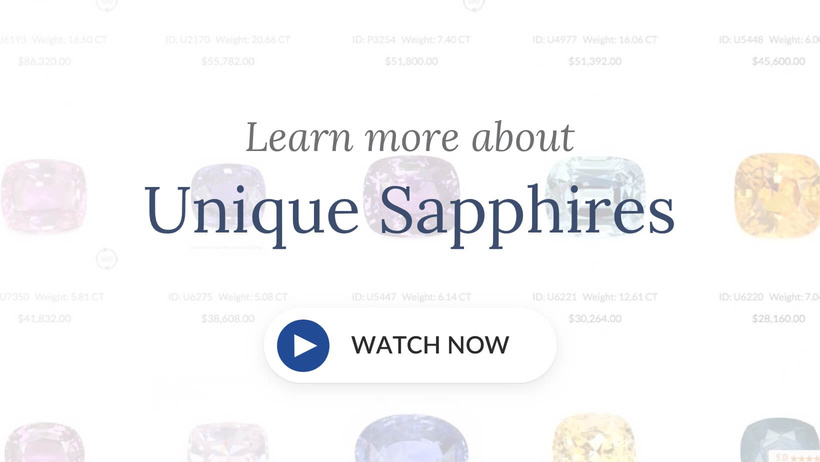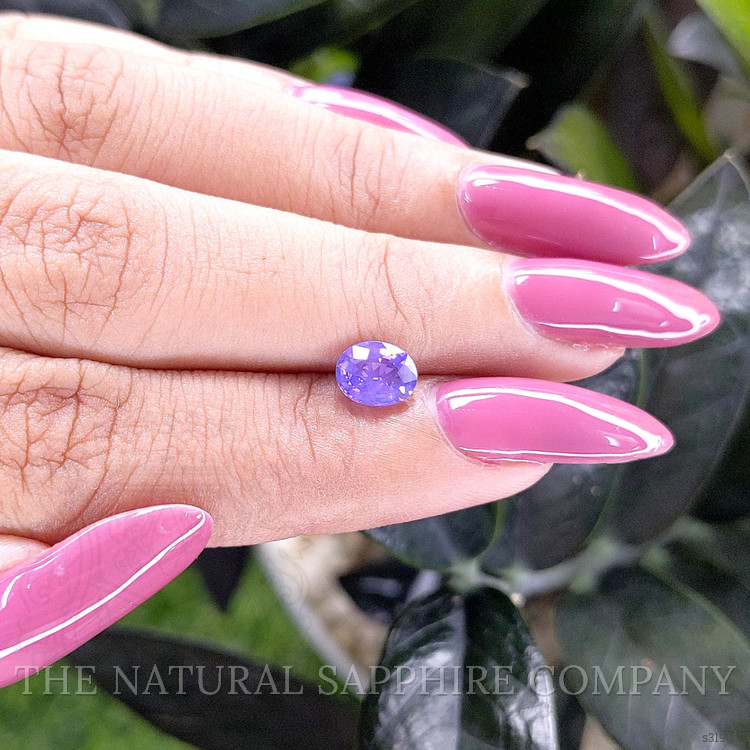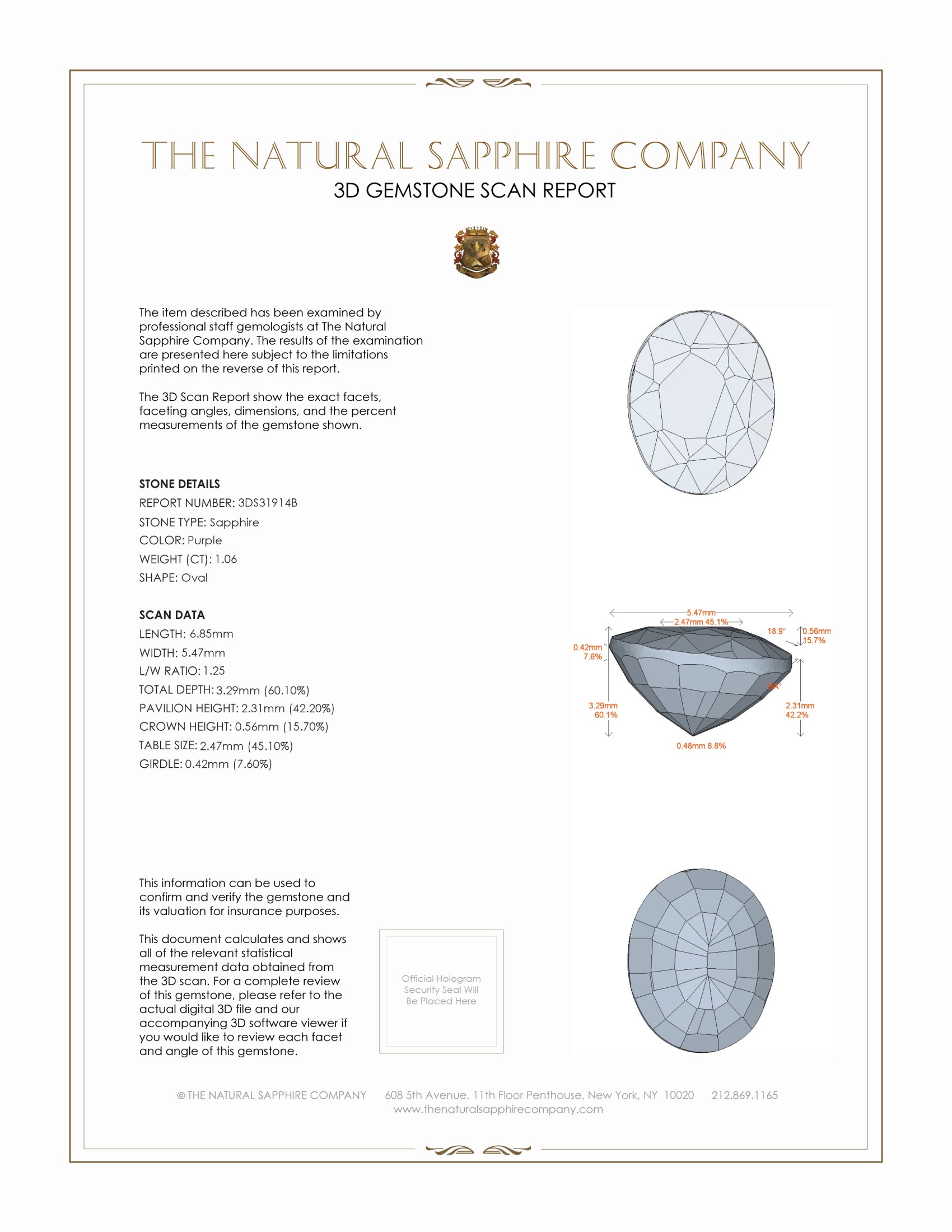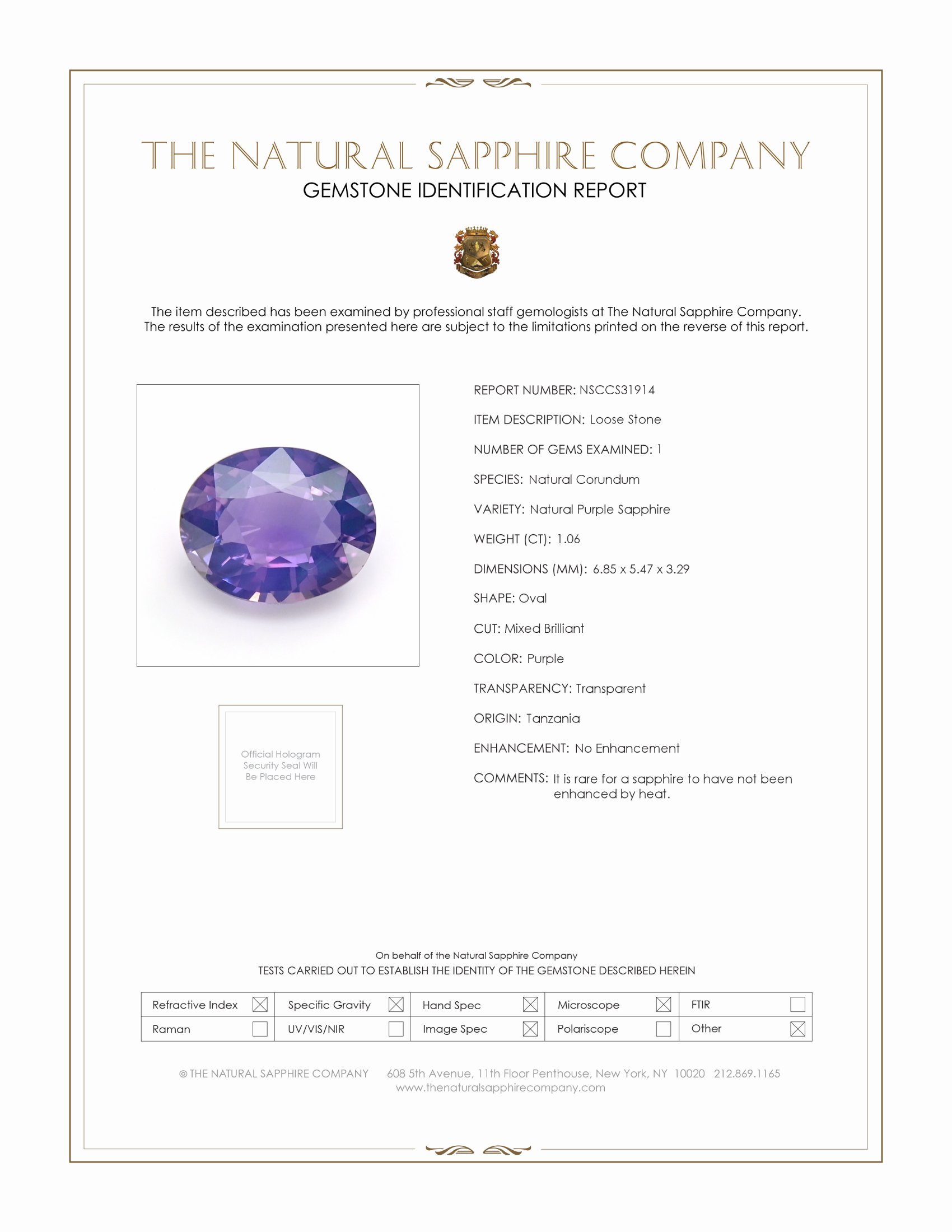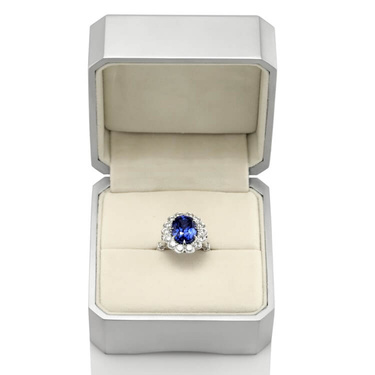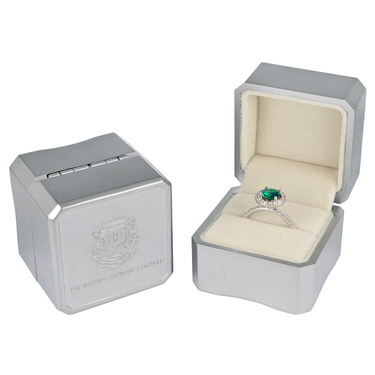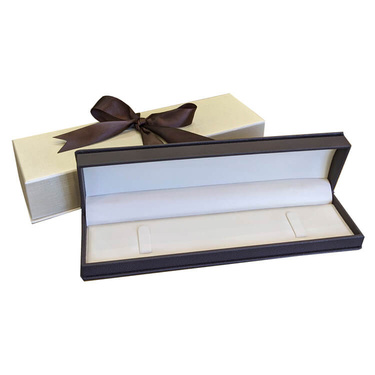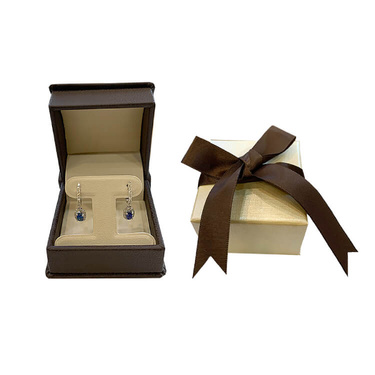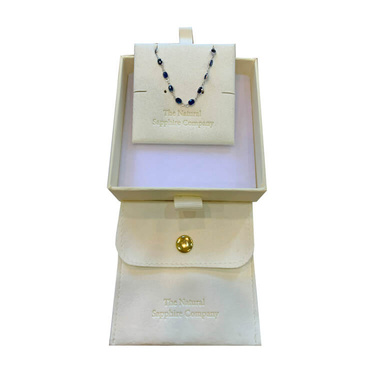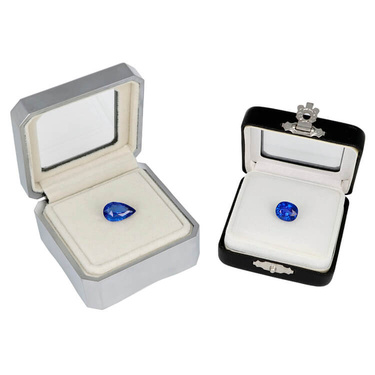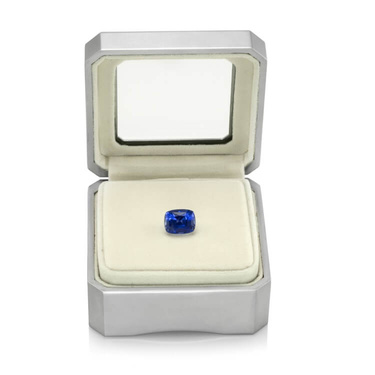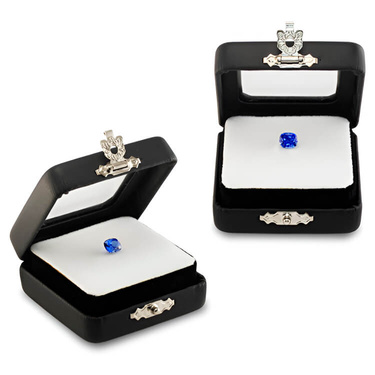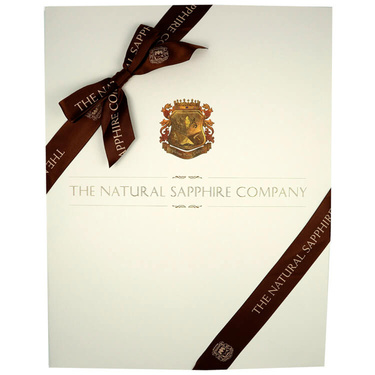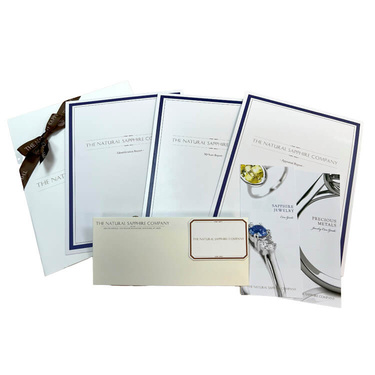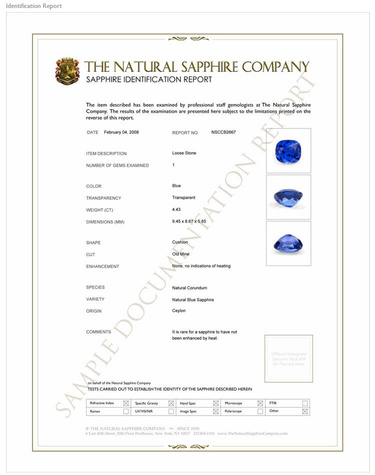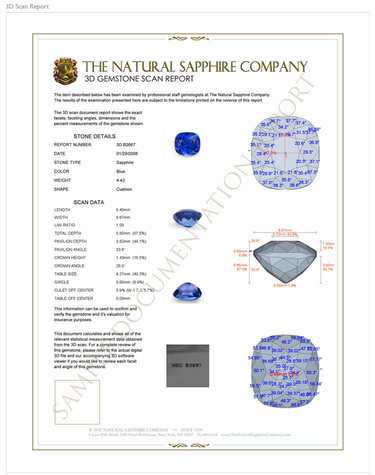- Stone14
- Reports3
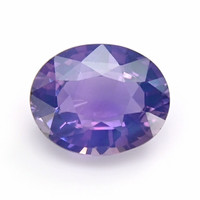

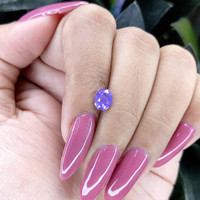
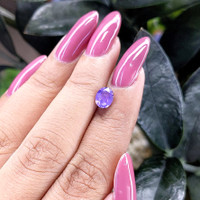
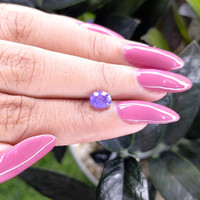
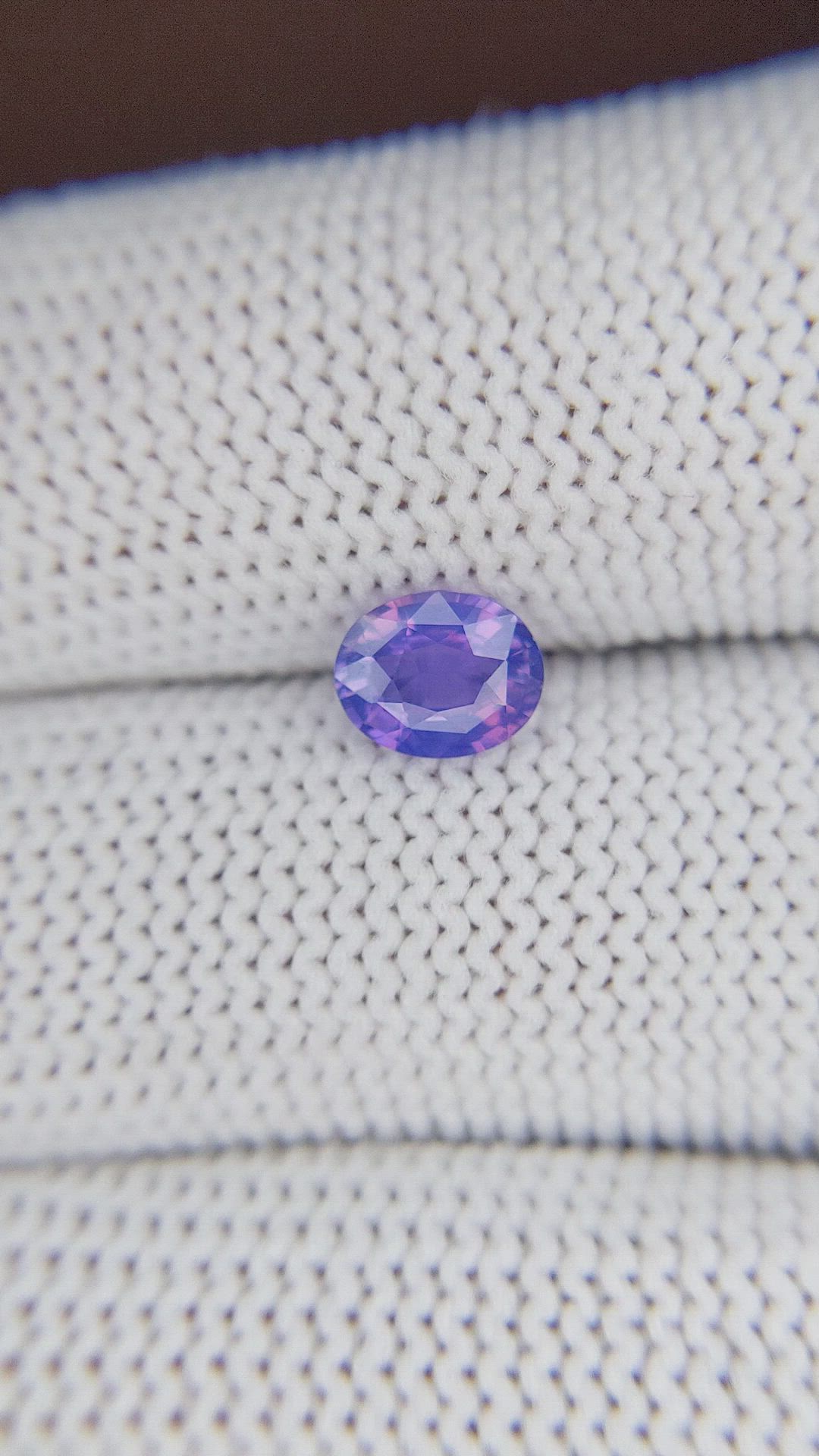
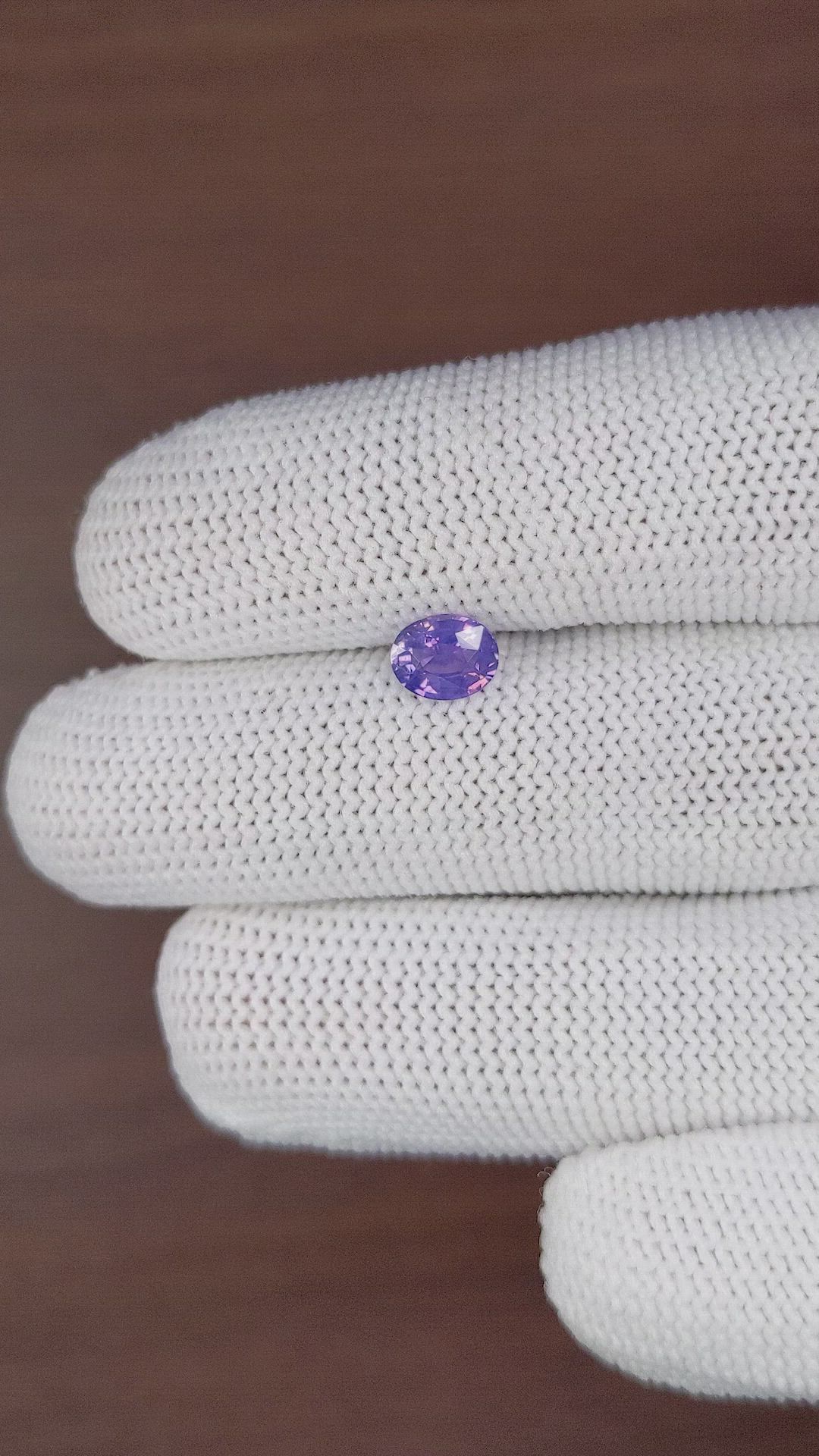
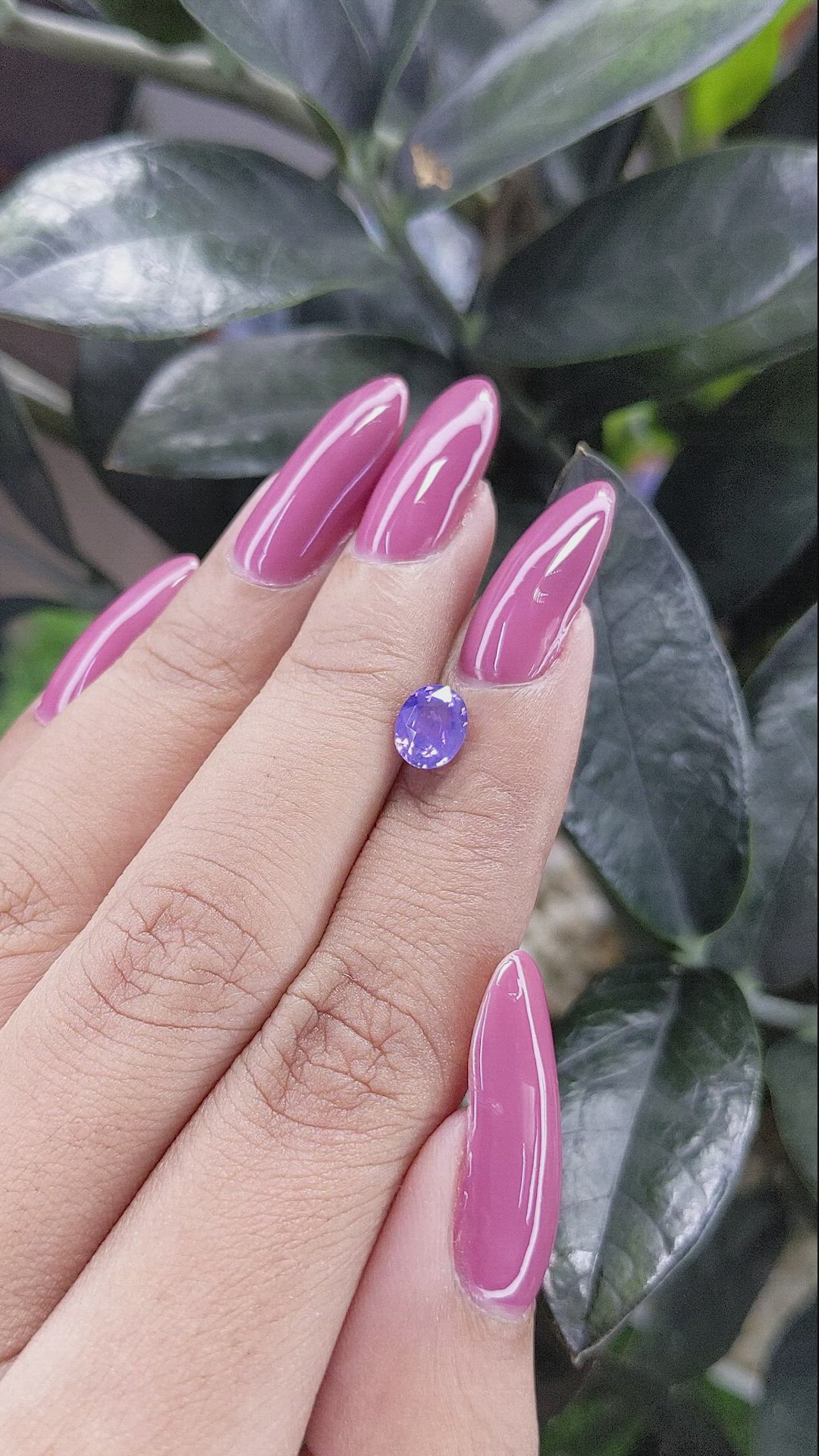
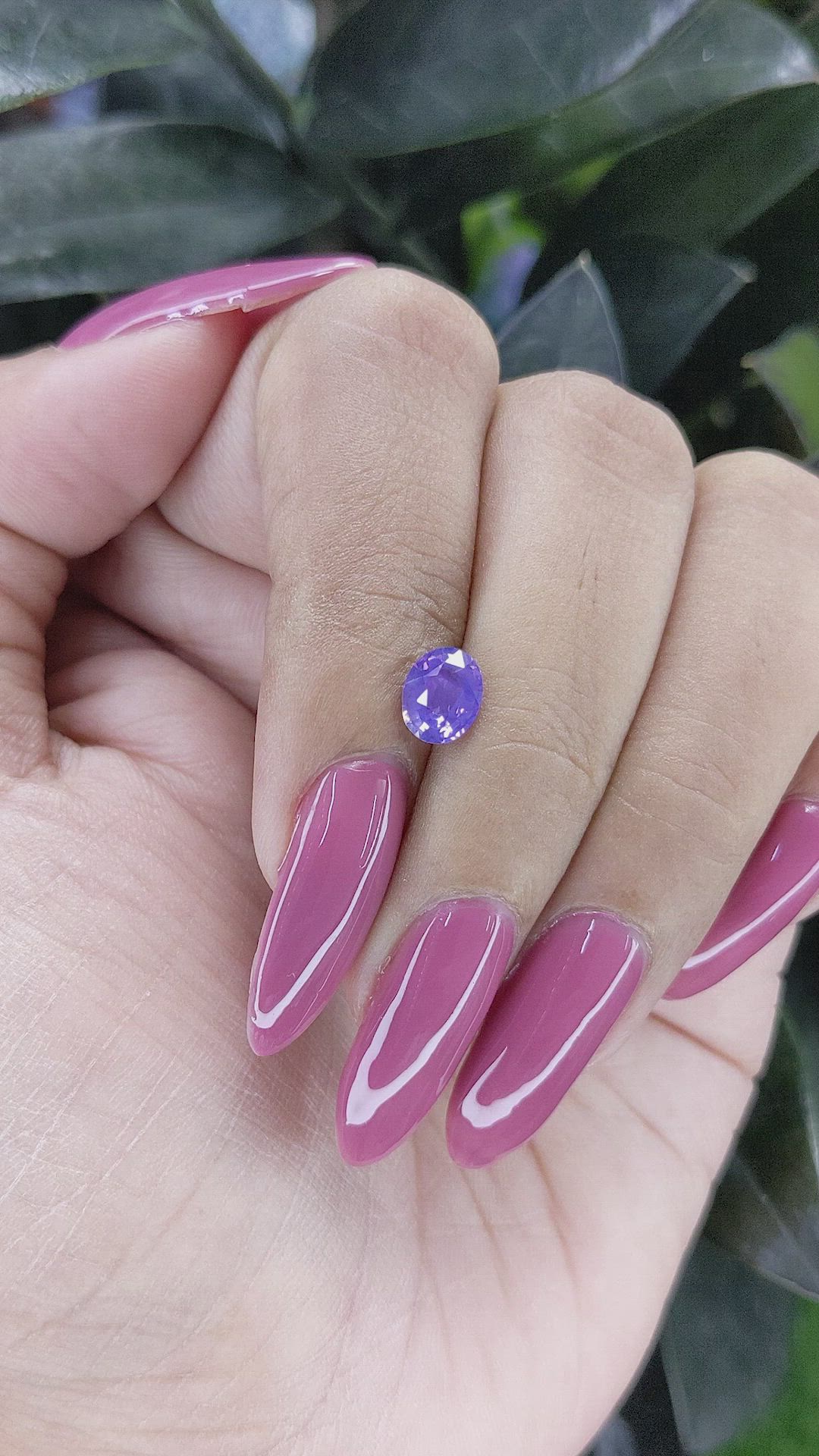





1.06 Ct. Purple Sapphire from Tanzania
This loose stone ships by Dec 6
Item ID: | S31914 |
|---|---|
Dimensions (MM): help | Length: 6.85 Width: 5.47 Height: 3.29 |
Weight: | 1.06 Ct. |
Color: help | Purple |
Color intensity: help | Intense |
Clarity: help | Eye Clean |
Shape: help | Oval |
Cut: | Mixed Brilliant |
Cutting style: | Faceted |
Enhancements: help | No Enhancement |
Origin: help | Tanzania |
Per carat price: help | $1,132 |
This transparent purple sapphire weighs 1.06 carats and measures 6.85 by 5.47 by 3.29 millimeters in an oval outline, with a mixed brilliant faceting that balances a faceted crown with a precisely configured pavilion. Clarity is graded eye clean at normal viewing distance, allowing unobstructed passage and return of light through the stone. Color is described as intense, a saturated violet purple that remains vivid across the crown, and the polish is excellent, producing crisp facet junctions and sharp internal reflections. This sapphire is unheated and unenhanced, a natural material from Tanzania, and the gem is presented with provenance and handling information by The Natural Sapphire Company.
Optically this sapphire exhibits the characteristic vitreous luster and refractive properties of corundum, with a refractive index that yields a strong return of light when well cut. The mixed brilliant cut on this oval emphasizes scintillation and return of white light while preserving color depth, so the gem shows lively facet contrast without becoming overly dark at the center. Compared with blue or pink sapphires of similar material and dimensions, purple corundum typically shows comparable overall brilliance due to the same refractive index, but color saturation and the stone s absorption profile shift how that brilliance is perceived, often making purple tones read as more vivid in diffuse light. Compared with spinel, which has a slightly lower refractive index and is singly refractive, this sapphire will show marginally greater sparkle and a slightly sharper facet outline, while spinel tends to present a more even, less pleochroic color. Compared with tanzanite, which has a lower refractive index and strong trichroic pleochroism, the purple sapphire delivers steadier, more consistent light performance and less color shift with viewing angle, while tanzanite will change tone more dramatically depending on orientation and lighting.
When set in jewelry this sapphire will exhibit sustained brilliance and durable surface polish, benefits of corundum hardness that make it suitable for everyday wear. The mixed brilliant faceting produces well defined scintillation that complements the intense hue, and the eye clean clarity enhances transparency and light transmission, so the gem reads as lively and saturated without obscuring inclusions. Compared with common alternatives in the market, quartz varieties such as amethyst have a notably lower refractive index and therefore a softer, more subdued light return, and they do not show the same crisp facet sparkle as this sapphire. Garnets and tourmalines vary across species, but many will show lower dispersion and different pleochroic behavior, making this Tanzanian sapphire distinctive for its combination of intense color, clean clarity, and the higher refractive properties of corundum. The Natural Sapphire Company documents the origin and treatment status of this gem, allowing accurate assessment of how its reflective qualities will perform in practical settings.



